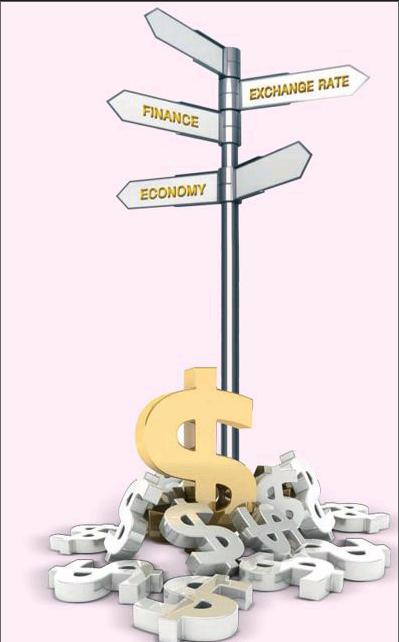Investment
2015-02-06byZhengRan
by+Zheng+Ran



National Economy with Investment in Fixed Assets
Macro-economy proved to be growing at rate of stable steps with important indicators showing uptick in spite of a slowdown in investment growth which is given in the following statement issued by National Bureau of Statistics.
Investment in fixed assets slightly slowed down
From January to October 2014, the investment in fixed assets (excluding rural households) reached 40,616.1 billion yuan, up by 15.9 percent year-on-year in nominal terms, dropped 0.2 percentage points over that in the first nine months. In October, the investment in fixed assets(excluding rural households) increased 1.64 percent, month-on-month.
In term of different industries, from January to October, the investment in primary industry was 982.9 billion yuan, went up by 28.9 percent year-on-year, increased 1.2 percentage points over the first nine months; that of secondary industry was 17,026.1 billion yuan, went up by 13.4 percent, decreased 0.3 percentage points; that of tertiary industry was 22,607.1 billion yuan, went up by 17.4 percent, and the growth rate kept at the same level.
In secondary industry, the investment in industry reached 16,699.4 billion yuan, increased 13.1 percent year-on-year, 0.4 percentage points lower over the first nine months. Of which, the investment in mining industry stood at 1,149.7 billion yuan, went up by 2.2 percent, down by 1.4 percentage points; that of manufacture, 13,703.5 billion yuan, increased 13.5 percent, down by 0.3 percentage points; that of production and supply of electric power, heat power, gas and water, 1,846.2 billion yuan, increased 17.7 percent, up by 0.2 percentage points.
In tertiary industry, the investment in infrastructure (excluding electricity) was 6,773.3 billion yuan, increased 22.6 percent year-on-year, up by 0.4 percentage points over that in the first nine months. Of which, the investment in management of water conservancy increased 21.9 percent, down by 1.6 percentage points; that of management of public facilities increased 25.2 percent, up by 0.9 percentage points; that of transport via road increased 18.9 percent, up by 0.3 percentage points; that of transport via railway increased 25.1 percent, kept at the same level.
In term of different areas, the investment in eastern region amounted to 18,574.7 billion yuan, rose by 14.6 percent year-on-year, dropped 0.3 percentage points over that in the first nine months; that of central region, 11,376.8 billion yuan, surged 17.6 percent, down by 0.2 percentage points; that of western region, 10,333.6 billion yuan, increased 17.8 percent, decreased 0.1 percentage point.

In term of types of registration, the investment by domestic enterprises was 38,581.9 billion yuan, up by 16.6 percent year-on-year, dropped 0.2 percentage points over that in the first nine months; investment by funds from Hong Kong, Macao and Taiwan was 972.2 billion yuan, up by 8.6 percent, increased 0.7 percentage points; and the investment by foreign funds was 902.8 billion yuan, down by 0.2 percent, and the pace of decline narrowed 0.3 percentage points.
In terms of jurisdiction of project management, the central investment reached 1,940.6 billion yuan, increased 10.4 percent year-on-year, 1.8 percentage points lower over that in the first nine months; while the local investment was 38,675.5 billion yuan, up by 16.2 percent, remained at the same level.
Analysis on projects under construction or started this year showed that, the total planned investment in projects under construction reached 89,009.6 billion yuan, up by 11.5 percent year-on-year, decreased 1.0 percentage point over that in the first nine months. The total planned investment in newly started projects was 34,108.9 billion yuan, up by 13.7 percent year-on-year, decreased 0.7 percentage points.
In terms of paid-in funds, from January to October, 43,905.9 billion yuan had been invested, rose by 12.4 percent yearon-year, kept at the same level over that in the first nine months. Of this total, the growth of government budgetary funds went up by 14.3 percent, increased 0.2 percentage points over that in the first nine months, investment from domestic loans went up by 11.2 percent, kept at the same level, that from self-raising funds went up by 16.0 percent, 0.1 percentage point decreased, that from foreign investment decreased 7.1 percent, and the pace of decline increased 0.1 percentage point, other investment dropped 3.4 percent, and the pace of decline increased 0.4 percentage points. (Table 1)
Foreign Direct Investment (FDI) in China
China FDI inflows jump 22.2 percent in November
According to the Ministry of Commerce (MOC), foreign direct investment (FDI) into the Chinese mainland jumped 22.2 percent in November from a year earlier, settling at 10.36 billion U.S. dollars.
Growth quickened from a 1.3-percent rise in October and 1.9 percent in September, as investments into the countrys service industry continue rising steadily.
For the first 11 months, the FDI, which excludes investment in the financial sector, stood at 106.24 billion U.S. dollars, up 0.7 percent from the same period last year, the ministry said.
Around 55.1 percent of the FDI went into the countrys service sector during the Jan.-Nov. period. FDI into the manufacturing sector moved down 13.3 percent to 35.93 billion U.S. dollars, accounting for 33.8 percent of the total.
Investments from the Republic of Korea and Britain saw fast growth, up 22.9 percent and 28 percent respectively. In contrast, investment from Japan plunged 39.7 percent, followed by a 23.6-percent drop from the ASEAN nations and 22.2-percent slump from the United States.
Tuesdays data also showed Chinas outbound direct investment by nonfinancial firms moved down 26.1 percent to 7.92 billion U.S. dollars in November, bringing the total volume in the first 11 months to 89.8 billion U.S. dollars.
MOC spokesman Shen Danyang said the ministry expects the scale of inbound and outbound investments to be “rela- tively close” this year.
The stronger-than-expected FDI data came as the worlds second largest economy is still facing relatively big downward pressures.
Dragged down by a housing slowdown, softening domestic demand and unsteady export, Chinas growth slid to a low not seen since the 2008/2009 global financial crisis in the third quarter.
In the first three quarters, Chinas gross domestic output expanded by 7.4 percent. To support the faltering growth, the central bank last month decided to lower the one-year benchmark lending rate by 40 basis points and the one-year deposit rate by 25 basis points, the first interest rate cuts in more than two years.
The move gave a big boost to the stock market, but with Chinas deflation risk on the rise, analysts are expecting further easing to invigorate the economy.
Also the HSBC released the flash manufacturing PMI that showed Chinas manufacturing activity dropped to a seven-month low in December, which the HSBC chief China economist Qu Hongbin said would warrant further monetary easing in the coming months.
杂志排行
China Textile的其它文章
- Responsible cotton leads the way towards sustainable progress
- To review 2014 well,to prospect 2015 better
- Calendar
- The kids have it:Parents will pay more for unique, quality kids clothesn
- CINC unites Japan-funded dyeing and finishing company to conclude supply chain alliance
- INVISTA’S new LYCRA brand focuses on the China market and increases investment
